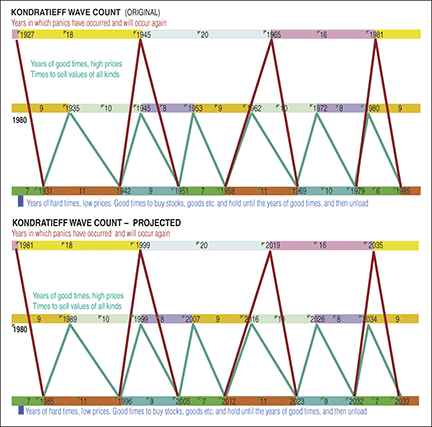CYCLES
Kondratieff A Go-Go
Today’s K-Wave And Beyond
Trying to make sense of the markets is always a challenge. Here’s an updated look at the Kondratieff wave after 2010.
When Nikolai Kondratieff developed his wave theory, he had never heard of technical analysis. He had also never met Ralph Elliott of Elliott wave theory fame, a man who lived in the same generation that he did, a man who expressed in a book he had written about Latin America: “There is a reason for everything and it is one’s duty to discover it.”
In 1946, Ralph Elliott published Nature’s Law: The Secret Of The Universe, and sold the first 1,000 copies quickly to financial analysts. I have often wondered whether he had read about Nicolai Kondratieff and his cyclical theory, which came to international attention in Kondratieff’s 1925 book, The Major Economic Cycles (also translated as Long Wave Cycle). Tragically, Kondratieff’s conclusions were seen as a criticism of Josef Stalin’s intentions for the Soviet economy, causing him to be sentenced to the Soviet gulag and ultimately executed in 1938.
Joseph Schumpeter in his 1939 book Business Cycles was the first to use the term “Kondratieff waves,” which means that Ralph Elliott could have been aware of them. However, there is no evidence that he ever tied his wave counts to the K-wave.

Figure 1: kondratieff wave charts. Here you see the standard Kondratieff wave chart going all the way back to the 1920s when Nikolai Kondratieff first wrote about it. I have projected it into the future to 2039.